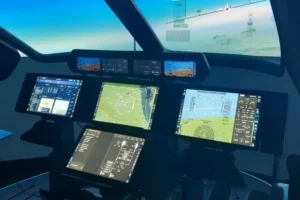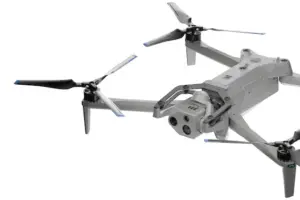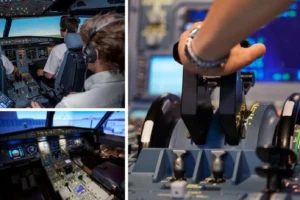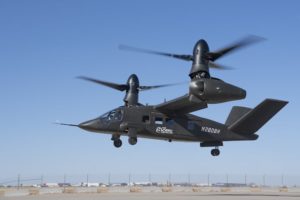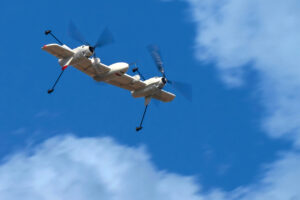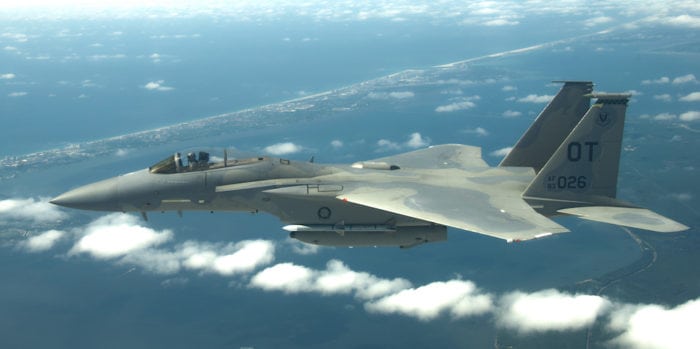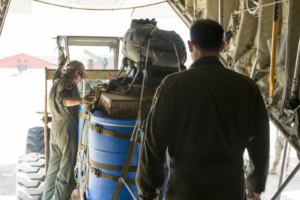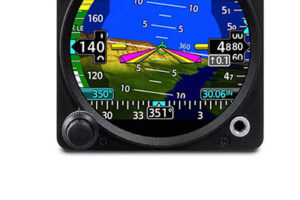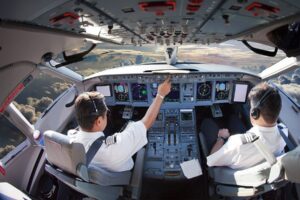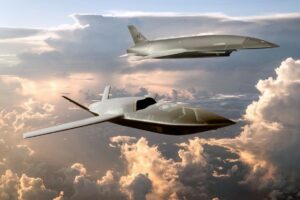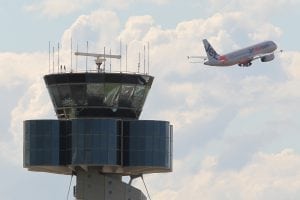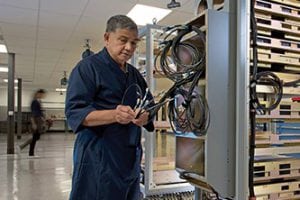Using NextGen to Improve Aircraft Navigation
By by Woodrow Bellamy III | February 1, 2015
Send Feedback

Some of the busiest airports in the United States daily demonstrate the operational challenges of navigating an aircraft efficiently. An example is Atlanta’s Hartsfield-Jackson International Airport, which has multiple parallel runways and a complex mixture of aircraft types — all with specific airspace needs. New York’s busy international La Guardia Airport is another example, where crossing runways and limited taxiways make it difficult to maneuver an aircraft. Meanwhile, the New York airport is also in facing expansion limitations due to surrounding water and is sharing one of the largest airport systems in the world with nearby JFK and Newark Liberty International airports.
One of the ways the FAA is tackling these limitations is by redesigning the airspace pathways surrounding these airports, with its Optimization of Airspace and Procedures in the Metroplex (OAPM) NextGen initiative. The initiative takes a geographic area covering several airports that serve major metropolitan areas with a diversity of aviation stakeholders and recreates its skyways to allow aircraft to use their Flight Management Computers (FMC) and advanced navigation systems to fly the two areas of Performance Based Navigation (PBN): Area Navigation (RNAV) and Required Navigation Performance (RNP).
NowGen Navigation
Toward the end of 2014, the FAA modernized the Houston and North Texas airport systems, creating Optimized Profile Descent (OPD) procedures, establishing new departure and arrival routes that align airplanes on their preferred navigational paths, as well as forming side-by-side arrival routes into George Bush Intercontinental Airport in Houston, Texas. Between the Houston and North Texas metroplex projects, the FAA and industry collaborated to implement 141 new satellite-based navigation procedures that allow aircraft to unlock the advanced capabilities of their FMS.
“Combining the metering tools that the FAA uses to help space aircraft and the FMC’s ability to plan the aircraft’s descents, we’ve seen a reduction in the number of level-off segments and a reduction in overall vectors off arrival procedures,” says Ron Renk, chief technical pilot for navigation at United Airlines. “These have both contributed to a reduction in fuel and emissions, as we predicted, for Houston. North Texas is still relatively new and we are just now starting to collect enough data to do an analysis.”
According to Rex Hygate, business development manager, at Esterline CMC Electronics, a lot of legacy aircraft have older FMS that face complexities with the new procedures. “What happens is these approaches are idle descents so they save the airline money, they’re easier for [Air Traffic Control] ATC because they just say ‘you’re cleared to land on this approach,’ they don’t have to say anything else to them until they land, so it clears up the airways. It also allows them to shuffle aircraft below and above the tube of the approach, because they know all of the aircraft will stay within the tube,” he says. “The trouble from an older FMS perspective is the approaches are much more complex. They’ll have 10 or 15 vertical waypoints each of them with a maximum and minimum altitude. A lot of older FMS can’t take this. This is something where we’re contributing for some aircraft in order to continually upgrade the FMS so they can fly the new approaches both to take advantage of the fuel savings and to be able to fly best-equipped, best-served.”
Other suppliers that specialize in OEM and retrofit avionics systems that enhance navigation performance and reliability, such as Innovative Solutions and Support (IS&S), have also introduced NextGen-based retrofit packages designed to boost the navigational efficiency of airlines’ legacy aircraft. “Our Boeing 737 Cockpit Upgrade package targets legacy aircraft facing issues of obsolescence of original equipment as well as significant gaps in NextGen functionality, such as support for RNAV/RNP with curved paths, GPS/WAAS, [Localizer Performance with Vertical Guidance] LPV, [Controller Pilot Data Link Communications] CPDLC and [Automatic Dependent Surveillance-Broadcast] ADS-B,” says Forrest Colliver, vice president of NextGen programs at IS&S. “The IS&S upgrade package for the Boeing 737 Classic is designed for both flexibility and to minimize operational differences between upgraded Classics and the more modern B737NG aircraft.”
In 2015, the FAA will continue to work with the industry to move more OAPM projects forward, further improving the efficiency and accuracy of aircraft paths into and out of the system of networks that makes up the National Airspace System (NAS). The realization of continued improved aircraft navigation efficiency will rely on a combination of strong avionics systems, flying PBN procedures and the availability of supporting tools, such as a “robust and effective spacing and sequencing system,” says Jim Davis, national airspace lead for the National Air Traffic Controllers Association (NATCA).
“We should see progress in all of our active metroplexes, assuming FAA funding and resources continue as planned,” he says. “We will see design and evaluation activities continuing in Charlotte, Atlanta, Southern California, Florida, Cleveland/Detroit and Phoenix. Implementation activities for Northern California and D.C. Metro are expected within the next few months.”
Airlines, such as United with Captain Renk, are also going to continue to work with the FAA and OEMs to improve their ability to use the NextGen-enabled usage of their aircraft’s avionics systems. “There are still impediments that prevent using the NextGen procedures 100 percent of the time. We already predicted weather would be one of those factors and it definitely has had an effect. We need to continue to work with the FAA and aircraft manufacturers to better utilize the FMC when we need to deviate for weather,” says Renk.
NextGen Navigation
While the FAA continues to modernize its computer-based air traffic system and redesign the use of its busiest airspace routes and pathways, the industry continues moving forward with game-changing aircraft navigation technology that can be used to navigate more efficiently under NextGen sky-ways. Take, for instance, the industry’s latest airliner, the Airbus A350 XWB, which entered into service with Qatar Airlines in January.
Rockwell Collins designed most of the navigation technology onboard the A350. “We’re pretty excited about the A350, as far as navigation,” says Steve Timm vice president of air transport systems at Rockwell Collins. “The biggest thing that was introduced in the [Multi-Mode Reciever] MMR for the A350 is SBAS, Satellite-Based Augmentation System, and this is the first air transport platform to get an SBAS solution. As we progress into the NextGen air traffic management roadmap and the Single European Sky mandates that are coming for the Eurozone, one of the key drivers in both of those initiatives is performance-based navigation, and PBN relies on a more accurate satellite-based solution. What SBAS does is add additional satellites to the constellation that are stationary above a certain location. From a GPS perspective, SBAS gives aircraft improved navigation in general because you have more satellites to use in that solution, but also the SBAS satellite gives some information that helps augment the position of the aircraft,” Timm says.
Another improvement of aircraft navigation that could be deployed in the future is the concept of 4-D navigation, which adds the fourth dimension of time to the three spatial dimensions that are currently used to calculate an aircraft’s navigational trajectory. This helps to improve arrival times for airlines, as they can more accurately project flight arrival times because of a more precise way of estimating the aircraft’s navigational path between airports. “The concept of 4-D Trajectory management is another key aspect to some of the air traffic management initiatives that are going on around the world where we’re trying to put essentially more aircraft into the airspace,” says Timm. On the A350, Rockwell Collins provided a “more accurate, and higher integrity and more availability navigation solution that then gets used by the Flight Management System and other systems on the airplane to provide this overall 4-D trajectory management,” he adds.
While 4-D may seem like a futuristic concept, it is a realistic possibility within the next 5 to 10 years, and research continues. In 2013, the FAA commissioned MIT to study the ability of aircraft Flight Management Systems’ to represent accurate information about the impact of wind on the aircraft’s navigational path. Last year, NASA and air traffic management company Saab formed a new agreement to research the use of 4-D trajectory solutions to help reduce the highly congested New York airspace system. Europe is also researching 4-D for its Single European Sky program, where in March 2014 Airbus, Maastricht Upper Area Control Centre (MUAC) and North European and Austrian Consortium (NORACON), performed a second 4-D flight trial from Toulouse to Arlanda airports. “The AEEC organization, in charge of producing ARINC standards, adopted in October 2014 an update of the ARINC 702A (Advanced Flight Management System),” says Thierry Harquin, head of systems sales at Airbus, and a member of the ARINC industries activities non-profit standards body. “This update, referred to as Supplement 4, introduces significant updates, such as accurate winds and temperature data definitions, enabling the implementation of 4-D trajectory within the Flight Management System.” Research of future concepts such as 4-D trajectory and continued usage and analysis of the deployment of new procedures within the OAPM and other airspace system initiatives will lead to the continued NextGen enablement of navigation systems.
“I believe true utopia comes when all the initiatives have reached a critical mass. I liken it to the DOT building a new, bigger bridge along the highway. While they are building it, there are lots of lane closures or alternate routes to take, sometimes making the driver’s commute more difficult. But once it is finished and all the lanes of the new bridge are open, it is well worth the wait,” says Renk. “Once NextGen has applied its work to communications, navigation and surveillance, and a large portion of the National Airspace System is using NextGen, I think it will be a big improvement for pilots and passengers alike. Getting to that point, we see pockets of improvement but also still see business as usual where NextGen has not taken root or is missing key components.”


